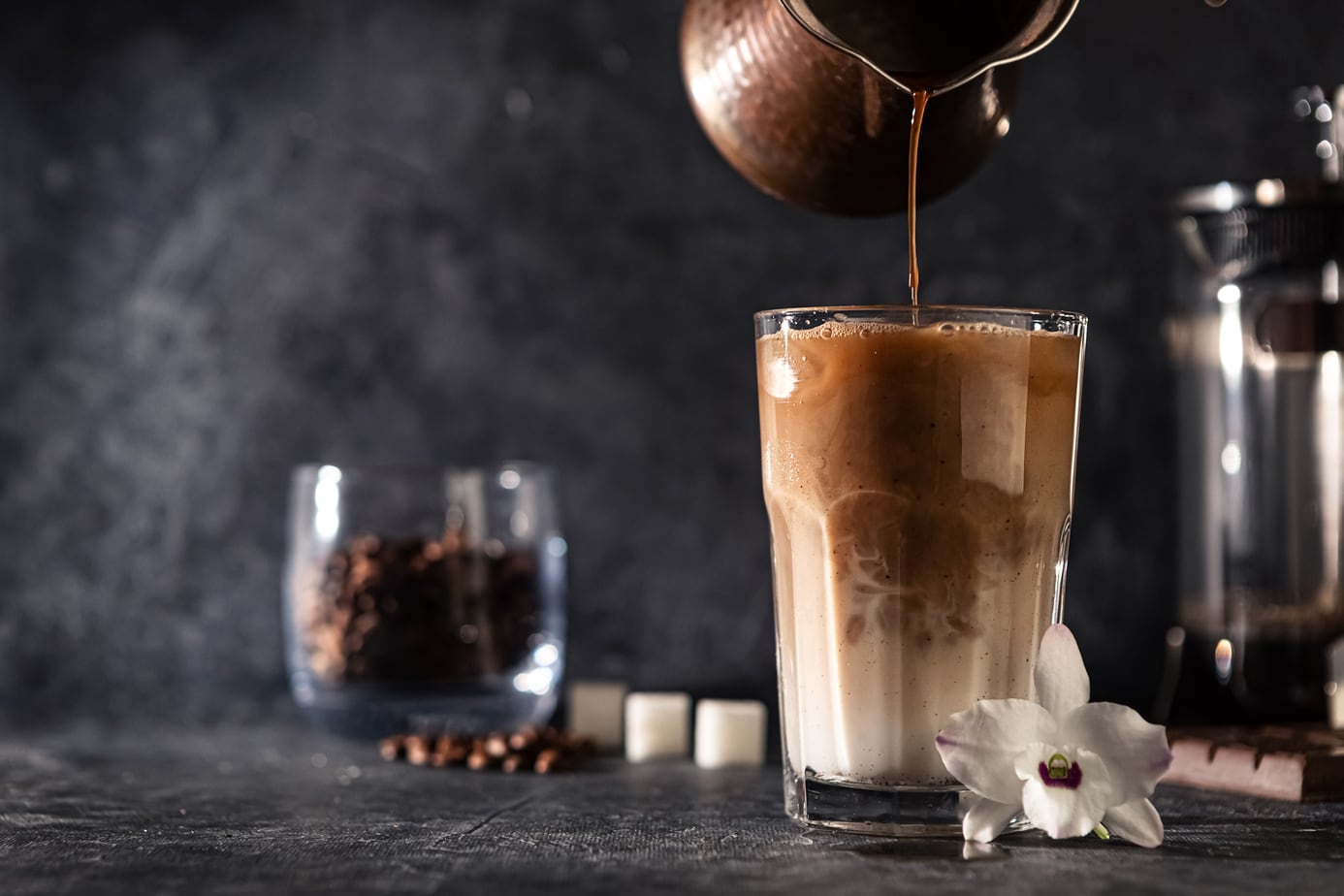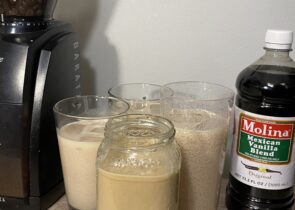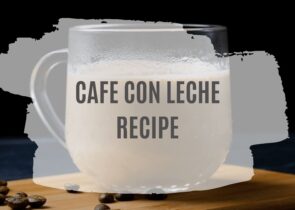Cold brew coffee has gained a real cult following since its introduction, and for good reason. Cold brewing your coffee is a great way to enjoy coffee that is a little easier on your stomach with a smooth richness. It’s also one of the few ways I enjoy drinking iced coffee.
So imagine my surprise when I found out that people were taking a drink that many believe is “best served cold” (for all you Star Trek nerds out there) and heating it. I had to try it myself. And let me tell you, if you haven’t tried heating cold brew coffee, you’re missing out.

What is Cold Brew?
Cold brew coffee is just that; coffee that is brewed with either cold or room temperature water, usually for 12 hours. Because of the water’s temperature, certain solubles in the ground coffee beans don’t have the chance to dissolve like they would in hot water.
The cold brewing process results in a cup of coffee much lower in acidity with a sweet, smooth taste.
Contrary to what you might think, heating a cold brew doesn’t interfere with its smooth flavor. Cold brew refers to how this type of coffee beverage is made, not how you drink it.
Once you brew it cold, you can do whatever you want with it, within reason.
What You’ll Need
Because cold brew coffee brews for so long, the result is a very concentrated form of coffee. You don’t want to drink your cold brew straight out of the pitcher or oversized Mason jar. Gather the following items:
- Cold-brew concentrate
- Water
- Your favorite coffee cup or mug
- A heat source
How to Heat Cold Brew Coffee
There are several ways for a coffee lover to heat their cold brew, and most don’t involve chemistry equipment or sorcery!
Microwave
I know, I know; you’re saying to yourself, “Nothing good has ever come out of a microwave.” While my burnt popcorn (seriously, it always burns) might tend to agree with you, don’t count this guy out just yet.
Yes, you might be sacrificing some of the subtle flavors, but we’ve all had those mornings when all you want is some smooth, sweet, non-acidic coffee to warm you up in a flash. That’s where the microwave shines.
Add Hot Water
If you made a cold brew concentrate, you would probably dilute it anyway, unless you didn’t, in which case, how’s everything going, buddy? So, why not use hot water instead?
Fill your mug halfway with water, throw it in the microwave until it comes to a boil, and then add your concentrate.
This way, your drink is warm and ready to drink without waiting.
Use an Electric Kettle
Okay, we get it; you really don’t want to use a microwave. Well, in that case, you can warm your water up in an electric kettle. This gives you the bonus of knowing that your water has reached its boiling point before adding it to your cold brew.
Just make sure you give it a minute or two to cool off. And don’t warm up the cold brew in the kettle; that’s just going to make a mess, and no one wants that.
Use the Stove
If you’re not a fan of diluting the concentrate, this one’s for you. Put your cold brew in a pot or saucepan on medium heat. Be careful not to heat it for too long, though.
As the cold brew is heated, the composition of the acids in the coffee will change slightly, changing the flavor. The longer you heat it, the more bitter the coffee will become, or you’ll burn it outright.
FAQs
Does cold brew have more caffeine content than regular coffee?
That depends on how you drink your cold brew. Because cold brew coffee is made with a higher ratio of coffee-to-water than regular hot-brewed coffee, it tends to be stronger and has higher caffeine levels than a hot brew.
However, most people like to dilute the concentrate with water, milk, or cream. When you do that, cold brew beverages often contain less caffeine than a regular cup of coffee.
Will it taste different?
That depends on how you warm the cold brew up. There are two real options here; adding water or not.
If you’re reheating the cold brew by itself, you run the risk of “restarting” and continuing the brewing process. And if you’ve ever had an over-extracted cup of coffee, you know you’re in for a bad time.
If you want to keep the original flavor, then your best bet is to add water that is just off-boil to a concentrate. Diluting with hot water instead of continuing the brewing will bring the temp up to a nice warm drink.
Is cold brew less acidic?
Absolutely, and science proves it! Niny Z. Rao and Megan Fuller conducted experiments on the acidity levels of hot and cold brew coffee. While they found the pH levels of the coffee don’t change much because of the temperature, the total acidity and antioxidants do.
Cold brew coffee is much lower in total acidity and antioxidants. The colder temperature cannot break down certain water-soluble compounds that give hot brew coffee its high acidity.
It took all that to say yes, cold brew is less acidic and science proves it!
Gotta love scientists that are coffee nerds, too.
How long can I keep cold brew concentrate in the refrigerator?
If you keep it undiluted, cold brew coffee concentrate can last up to two weeks in the refrigerator, but keep in mind you will start to lose that boldness after the first week.
If you’re the kind of coffee enthusiast I am, you won’t have to worry about that.
Is cold brew the same as iced coffee?
Yes and no. While they are both iced drinks that are great on a hot afternoon, iced coffee is, well, just hot coffee that has been iced.
Compared to cold brew, iced coffee tends to be much more acidic and has many of the same properties you get when you drink it hot. However, brewing it is much quicker than making a cold brew, which usually takes 12 hours.
But that long brew time gives cold brew its distinctive flavor and smoothness.
They are both great ways to brew coffee, and each should have its place in your toolbox of drinks.
Happy Caffeinating!







